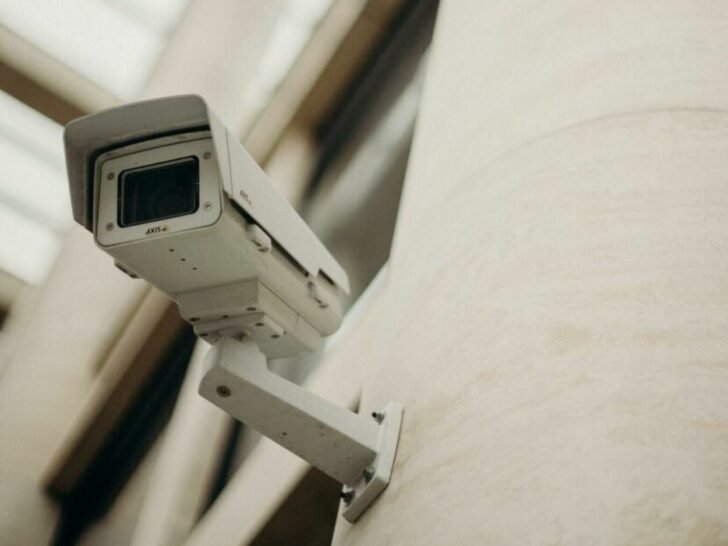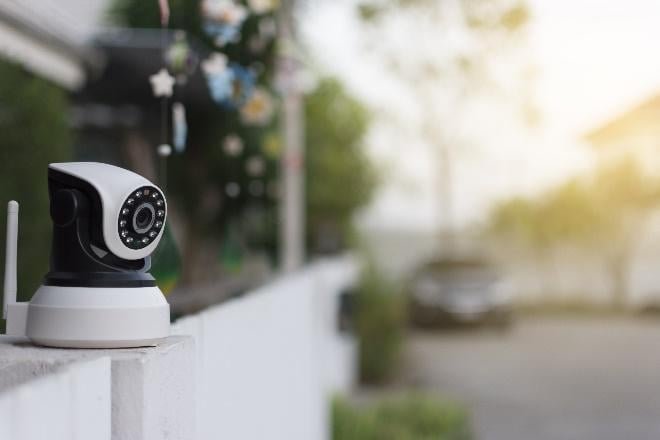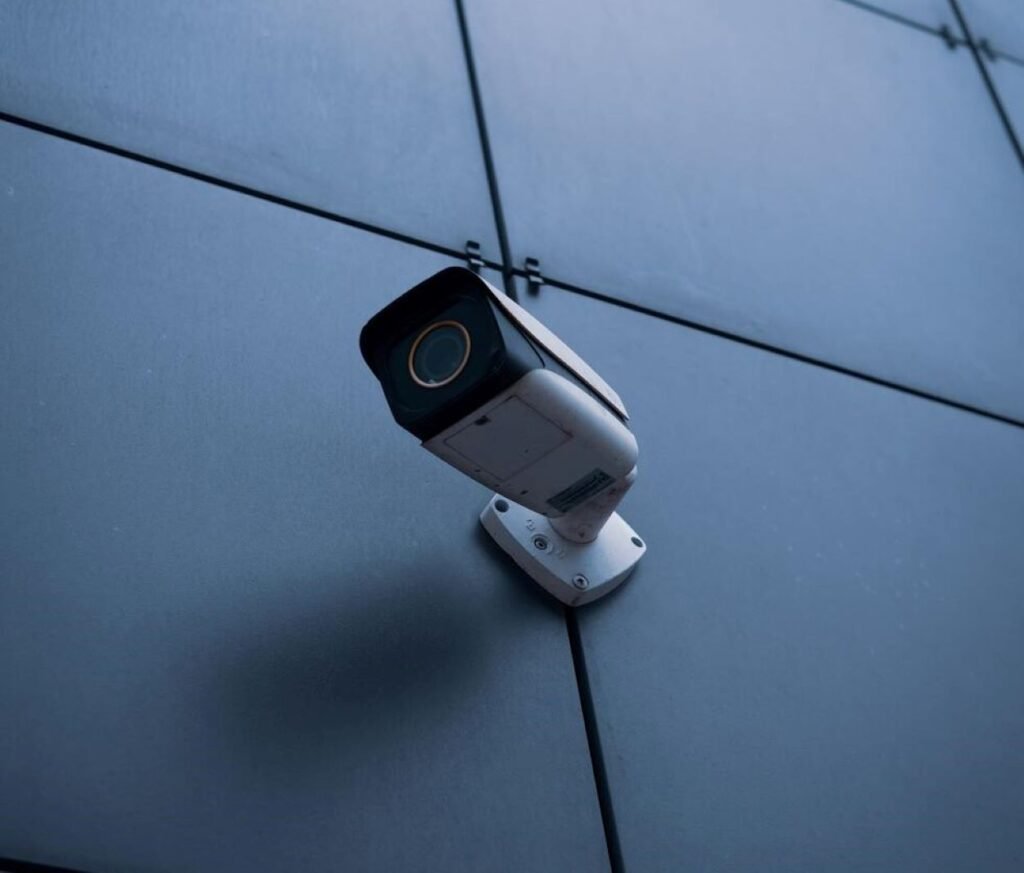I’m here to answer that question for you! If you’re wondering how long the batteries typically last in wireless security devices like cameras and sensors, you’ve come to the right place. Battery life is an important factor to consider when choosing these devices, as you want to ensure they will last for a reasonable amount of time without needing frequent replacements.
But don’t worry, I’ll provide you with all the information you need in the article. You’ll learn about the factors that can affect battery life, such as the type of device and its power consumption. I’ll also give you some tips on how to maximize the battery life of your wireless security devices. So, stay tuned and soon you’ll have a better understanding of how long these batteries typically last.
Factors Affecting Battery Life in Wireless Security Devices
When it comes to wireless security devices like cameras and sensors, the battery life is a crucial aspect to consider. After all, no one wants to constantly worry about changing or recharging batteries, especially in devices that are supposed to provide round-the-clock protection. In this article, we will explore the various factors that can affect the battery life in these devices and discuss techniques to optimize their performance.
1. Power Consumption of the Device
Understanding the power consumption of the wireless security device is the first step towards estimating its battery life. Different types of devices have varying power requirements, and it is essential to be aware of these specifications. For example, a camera that constantly records video footage will consume more power compared to a motion sensor that is in standby mode most of the time.
Types of wireless security devices and their power requirements
Wireless security devices come in various forms, such as cameras, motion sensors, and door/window sensors. Each of these devices has different power requirements depending on their functionalities. Cameras, for instance, require a constant power supply to capture and transmit video footage, which can significantly drain the battery. On the other hand, motion sensors have lower power consumption as they primarily operate in standby mode until motion is detected.
Standby mode power consumption
One of the crucial aspects to consider in wireless security devices is the power consumption during standby mode. Standby mode refers to the period when the device is powered on but not actively performing any tasks. It is important to select devices that have low standby power consumption as this can significantly impact the battery life. Devices with excessive standby power drain can quickly deplete the battery, even if they are not actively in use.
Power consumption during recording or operation
When a wireless security device is actively recording or operating, it consumes a considerable amount of power. Cameras, for example, require a constant power supply to capture and transmit video footage. The higher the resolution and frame rate of the camera, the more power it will consume. Similarly, other devices like motion sensors and door/window sensors can consume varying amounts of power depending on the sensitivity and frequency of their operations.
Impact of features and settings on power usage
The features and settings of wireless security devices can have a significant impact on their power usage. For example, cameras with added features like night vision or motion tracking tend to consume more power compared to basic models without these functionalities. Similarly, motion sensors with higher sensitivity levels or longer detection ranges may also require more power to operate. It is essential to choose devices with features that are necessary for your specific security needs to optimize battery life.

This image is property of cdn.shopify.com.
2. Battery Capacity
The battery capacity is another crucial factor that determines the battery life of wireless security devices. The higher the battery capacity, the longer the device can operate before requiring a recharge or battery replacement. It is essential to understand the different types of batteries available and their capacities to make informed decisions.
Different battery types and their capacities
Wireless security devices typically use batteries such as alkaline, lithium, or rechargeable batteries. Each type of battery has its own capacity, which is rated in milliampere-hours (mAh). Alkaline batteries generally have lower capacities compared to lithium batteries, but they are more widely available and cost-effective. Lithium batteries, on the other hand, offer higher capacities and longer life spans. Rechargeable batteries provide the convenience of being reusable, but their capacity may diminish over time with repeated charging cycles.
Battery capacity specifications of wireless security devices
Manufacturers usually specify the recommended battery capacity for their wireless security devices. These specifications help users understand the type and capacity of batteries required to operate the devices optimally. It is important to adhere to these specifications to ensure that the devices function correctly and provide the expected battery life.
Factors affecting battery capacity over time
Battery capacity can diminish over time, leading to reduced battery life. Several factors can affect the capacity of batteries in wireless security devices. For instance, exposure to extreme temperatures, frequent deep discharges, or prolonged usage without recharging can all contribute to capacity degradation. It is crucial to take proper care of the batteries and follow manufacturer guidelines to maintain their capacity over the long term.
3. Usage Frequency and Duration
The frequency and duration of usage have a direct impact on the battery life of wireless security devices. Understanding how these factors influence battery drain can help you optimize their usage patterns and extend the battery life.
Effect of usage frequency on battery life
The more frequently a wireless security device is used, the faster it will drain the battery. Continuous or prolonged usage can significantly reduce the battery life. Therefore, it is important to strike a balance between utilizing the devices as needed and conserving battery power when not in use.
Impact of continuous or prolonged usage on battery drain
Using wireless security devices continuously or for extended periods can lead to quicker battery drain. For example, a camera set to record continuously will consume more power compared to a camera set to record only when motion is detected. Similarly, motion sensors that are constantly active may drain the battery faster than those that are triggered less frequently. It is essential to optimize the usage patterns to ensure that the devices are only active when necessary to conserve battery power.
Optimizing usage patterns to extend battery life
To extend the battery life of wireless security devices, it is important to optimize their usage patterns. This can be done by adjusting settings to reduce power consumption. For cameras, this could involve lowering the resolution or frame rate, using motion detection triggers, or scheduling recording times. Motion sensors can be adjusted to different sensitivity levels to minimize unnecessary activations. Door/window sensors can be used in combination with other security devices, such as cameras, to activate only when necessary. By optimizing usage patterns, you can reduce battery drain and extend the overall battery life of the devices.

This image is property of automatelife.net.
4. Environmental Conditions
Environmental conditions can have a significant impact on the battery life of wireless security devices. Factors such as temperature, humidity, and extreme weather conditions can affect the performance and longevity of the batteries.
Temperature and its effect on battery performance
Temperature plays a crucial role in battery performance. Extreme temperatures, both hot and cold, can adversely affect the capacity and overall performance of batteries. High temperatures can accelerate capacity loss and shorten battery life, while low temperatures can reduce the battery’s ability to deliver power effectively. It is important to operate wireless security devices within the recommended temperature range specified by the manufacturer to optimize battery performance.
Humidity and its impact on battery lifespan
Humidity can also impact battery lifespan, especially in devices that are exposed to moisture. Excessive humidity can cause batteries to corrode, leading to reduced performance and potentially damaging the device. It is essential to protect wireless security devices from excessive moisture and operate them in environments with controlled humidity levels.
Extreme weather conditions and battery longevity
Extreme weather conditions such as severe heat or cold can significantly impact battery longevity. Exposure to extreme temperatures can cause batteries to deteriorate more rapidly, leading to shorter battery life. It is crucial to take extra precautions to protect wireless security devices from extreme weather conditions to prolong their battery lifespan.
5. Techniques to Extend Battery Life
There are several techniques that can be implemented to extend the battery life of wireless security devices. By adopting these practices, users can maximize the performance and longevity of their devices while minimizing the need for frequent battery replacements or recharging.
Using low-power or energy-efficient modes
Many wireless security devices offer low-power or energy-efficient modes that can significantly reduce power consumption. These modes typically include features like power-saving settings or sleep modes that conserve battery power when the device is not actively in use. By enabling these modes, users can extend the battery life without compromising the effectiveness of the devices.
Adjusting motion detection sensitivity
Motion detection is a key feature in many wireless security devices, such as cameras and motion sensors. By fine-tuning the motion detection sensitivity, users can optimize the device’s performance and reduce unnecessary activations, leading to battery savings. Adjusting the sensitivity level to match the specific security needs of the environment can help strike the right balance between battery life and detection accuracy.
Optimizing camera recording settings
For wireless security cameras, optimizing recording settings can have a significant impact on battery life. Users can adjust the resolution, frame rate, or duration of recordings to conserve battery power. Recording only when motion is detected or scheduling specific recording times can also help reduce power consumption. By customizing the recording settings based on individual requirements, users can extend the battery life of their cameras.
Maximizing battery lifespan through periodic maintenance
Periodic maintenance is essential to maximize the battery lifespan of wireless security devices. This includes cleaning the battery contacts, checking for any signs of corrosion or damage, and ensuring proper battery insertion and connections. Regularly inspecting and maintaining the devices and their batteries can enhance their overall performance and longevity.

This image is property of automatelife.net.
6. Indicators and Warnings for Low Battery
Wireless security devices typically have built-in indicators or warnings to indicate low battery levels. These indicators can be visual, such as LED lights, or audible, such as alert sounds. It is essential to familiarize yourself with these indicators and respond promptly to low battery warnings. Ignoring low battery warnings can compromise the effectiveness of the devices and leave your property vulnerable.
Battery level indicators on wireless security devices
Most wireless security devices have battery level indicators that provide information about the remaining charge in the battery. These indicators can be displayed on the device itself or accessed through a connected smartphone app or web interface. It is important to regularly check the battery level indicators to stay informed about the battery’s condition and take appropriate action when necessary.
Alerts and notifications for low battery
Wireless security devices often include alerts and notifications to warn users when the battery level is low. These notifications can be sent through various means, such as text messages, email alerts, or push notifications on mobile devices. By enabling and configuring these notifications, users can stay informed about the battery status of their devices and take timely action to replace or recharge the batteries.
Replacing or recharging batteries in a timely manner
When the battery level in a wireless security device reaches a critical point, it is important to replace or recharge the batteries promptly. Delaying battery replacement or recharging can lead to device malfunctions or complete power loss, compromising the security of your property. It is advisable to keep spare batteries on hand or establish a regular battery replacement/recharging schedule to ensure uninterrupted operation of the devices.
7. Battery Replacement and Recharging
Proper battery replacement and recharging procedures are essential to maintain the optimal performance of wireless security devices. Following the manufacturer’s instructions and guidelines can help ensure a smooth and hassle-free process.
Instructions for replacing batteries in different devices
Different wireless security devices may have varying procedures for battery replacement. It is crucial to follow the manufacturer’s instructions provided in the user manual or on their official website. These instructions typically outline the steps involved in safely replacing the batteries without damaging the devices or compromising their functionality.
Choosing the right batteries for wireless security devices
Selecting the right type and capacity of batteries is crucial for optimal performance. It is recommended to use batteries that are recommended or specified by the manufacturer to ensure compatibility and maximize battery life. Choosing reputable brands and high-quality batteries can also contribute to the overall reliability and longevity of the wireless security devices.
Tips for proper battery recharging
For wireless security devices that use rechargeable batteries, following proper battery recharging practices is essential. It is important to use the provided charger or a compatible charger specifically designed for the batteries. Overcharging or undercharging the batteries can degrade their capacity and shorten their lifespan. Additionally, it is recommended to avoid exposing the batteries to extreme temperatures during the recharging process.

This image is property of www.allaboutcircuits.com.
8. Battery Life Expectancy in Different Devices
The battery life expectancy can vary depending on the type of wireless security device. While it is difficult to provide precise figures as battery life can be influenced by various factors, including the ones discussed earlier, here is a general overview of what to expect:
Average battery life in wireless security cameras
Wireless security cameras, due to their constant power consumption during recording and transmission, generally have a shorter battery life compared to other devices. On average, battery life can range from a few weeks to a couple of months, depending on factors such as recording settings, usage frequency, and battery capacity.
Battery longevity in motion sensors
Motion sensors typically have lower power requirements compared to cameras and can have longer battery life. Depending on the brand, battery capacity, and usage patterns, motion sensors can last anywhere from several months to multiple years before requiring battery replacement.
Battery performance in door/window sensors
Door/window sensors are usually designed to be power-efficient since they primarily operate in standby mode until activated. As a result, these devices often have longer battery life compared to cameras or motion sensors. Battery life for door/window sensors can range from several months to a few years, depending on the specific device and usage patterns.
Battery durability in key fobs or remotes
Key fobs or remotes used in wireless security systems typically have minimal power requirements. As a result, the battery life in these devices can be extended for several years before replacement is necessary. It is important to note that battery life can still be influenced by factors such as usage frequency and environmental conditions.
Conclusion
In conclusion, the battery life of wireless security devices like cameras and sensors is influenced by various factors such as power consumption, battery capacity, usage frequency and duration, and environmental conditions. By understanding these factors and implementing effective measures to optimize battery performance, you can ensure that your wireless security devices provide reliable protection without frequent battery replacements or recharging. Regular maintenance, timely replacement or recharging of batteries, and proper usage patterns can enhance the overall longevity and reliability of your wireless security system.

This image is property of automatelife.net.
